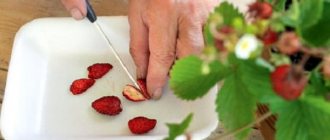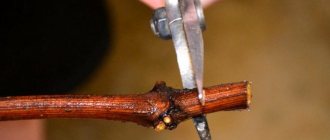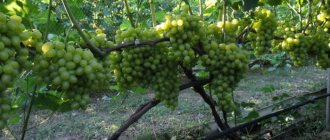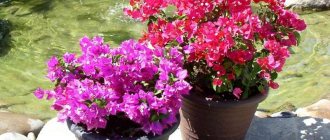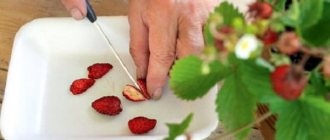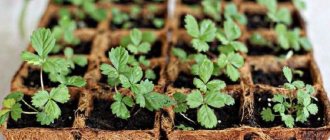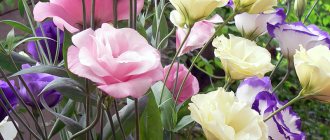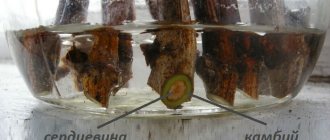Very often in the garden, in flower beds, on city streets, in parks and squares, you can see charming bushes with flowers that amaze with a riot of colors and a variety of colors. This perennial herbaceous plant, very unpretentious and blooms for a very long time, is called verbena. Growing such beauty from seeds is very exciting and accessible to everyone.
Verbena can grow anywhere and therefore can be used for a variety of purposes: to decorate a flower bed after the early spring flowers have faded. This plant feels comfortable and looks great in flowerpots and hanging flowerpots - its roots are compact and seem designed for such containers.
Propagation by seeds
Verbena is very easy to grow from seeds. It's very simple. Moreover, there is no need to prepare the seeds in advance. But still, there are some subtleties in growing it this way.
Landing
When planting, verbena seeds should not be planted too deep . They need to be spread as evenly as possible on the surface of the earth. In warm weather at an air temperature of 25 degrees C, the seeds will begin to come to life within two days. When the seeds begin to show signs of life, the box with the seeds should be placed in a cooler room, since verbena does not like excess heat.
Watering
You need to water the crops with great care, as excess moisture can destroy young verbena sprouts. Within a week, the first shoots of verbena will appear. And after one and a half to two weeks you will have a lot of young green sprouts.
Transplanting
Verbena seedlings should be planted in open ground when the threat of return frosts has passed and permanently warm weather has established. However, it can well tolerate a short-term drop in temperature to -3 degrees, but no more. Otherwise, the plant will die immediately.
If you need to get flowering verbena early, you can use a greenhouse or plant young shoots at home.
What kind of plant is this?
The plant is thermophilic, does not tolerate cold well, and dies quickly in frosty weather. The length of the flower stems can reach 60 cm, grows well and by the flowering period one bush can occupy a space of up to 0.5 sq.m.
The main characteristics of verbena are:
species diversity - more than 250 varieties have been bred;- the color of the leaves is light green, the shape is round or oval, there are teeth along the edges, the surface of the leaf is covered with villi;
- shades of flowers can vary from white to red and blue;
- each flower has 5 petals;
- flowers are collected in large inflorescences;
- long flowering period starting in July and ending in October.
After flowering, ampelous verbena bears fruit with nuts and seeds; the color of the shell can be green or light brown.
Propagation by cuttings
Preparation for cuttings
You can propagate verbena by cuttings, but this procedure must begin in the fall. On the eve of frost, verbena bushes are removed from the ground along with a large amount of soil and placed in any cool place - a basement, barn, balcony or any other outbuilding. In any case, the air temperature in the room should be no more than 10 degrees.
Cuttings
And in early spring you can make cuttings. But you can do this at another time if you want to place verbena bushes on windows or on a warm veranda. The best cuttings are obtained from the tops of shoots cut off. Each cutting should have at least 4-5 pairs of leaves. The cut on the handle should be sprinkled with crushed coal. We leave the leaves only at the top, and the lower leaves need to be torn off.
Rooting cuttings
Verbena cuttings root well in a mixture of peat and sand. The cuttings are planted shallowly, only up to the place where the lower torn leaves grew.
Mini greenhouse
Cover the pot or box with cuttings with cellophane. This can achieve a constant level of humidity. In about a month, well-formed roots will appear on the cuttings.
Single landings
If you plant verbena in single bushes, you will have to weed the garden bed throughout the growing season.
Group plantings
And if you do group plantings, you will only have to destroy weeds at first. The bushes will grow very quickly, forming a continuous carpet, and weeding will not be necessary.
Loosening
There is no need to loosen the soil either. But in the southern regions in the hot summer, after generous watering, a little loosening will still be necessary so that air can circulate well near the roots of the verbena. You can get rid of severe drying out and compaction by using a fairly common method of mulching, when rotted leaves or other available materials are placed under and around the plants.
Diseases and pests
- If you take good care of your verbena, it should not be affected by pests or diseases.
- But if the plant receives too much water, it may develop powdery mildew, which is identified by white spots on the leaves.
- Also, too much moisture can lead to rot. In this case, spotting may appear, as well as a high probability of blackleg.
- If the leaves of verbena dry out and turn yellow, then most likely it is the opposite - it lacks moisture.
- If the verbena is fertilized too much with nitrogen fertilizers, it will bloom poorly or this process will not begin at all.
Care
Caring for this flower is easy. All care consists of cultivating the soil, watering, and fertilizing is also necessary.
Watering
Moderate and regular watering is a necessary point of caring for verbena during its active development and during flowering. From mid-July, the amount of watering can be reduced.
Feeding
It is best to feed verbena with complex fertilizers. Along with mineral fertilizers, you can also use organic fertilizers (compost and pre-prepared manure). But they must be used with caution and moderation. Otherwise, all your careful care will go down the drain. During the entire growing season, organic matter needs to be added only once so that the soil does not become oversaturated with nitrogen . As a result, very few flower buds will be formed, and greenery will actively grow.
Adviсe
- To speed up the germination of sown seeds, it is recommended to put them in the refrigerator for a period of 2 to 3 days. For the same purpose, you can use a growth stimulator by soaking the seeds in the solution before sowing.
- With proper care, verbena is not prone to disease, but excessive watering can lead to rotting of individual parts of the plant and the appearance of diseases such as powdery mildew or blackleg. Regular watering is required only during the growth and flowering period, then it is reduced. Remember that watering should always be moderate. But the soil should not be allowed to dry out.
- To extend the flowering period of verbena, do not forget to remove faded inflorescences. You need to cut about a quarter of the length of the shoot. It is also necessary to regularly loosen the soil around the plant (especially during dry summers after watering), and remove weeds from single bushes.
Using the recommendations for growing verbena given in this article, you can independently and easily decorate your garden with this beautiful, unpretentious and long-flowering plant.
Verbena character
Verbena is quite unpretentious. It is resistant to heat and drought. It is not afraid of slight autumn and spring frosts (down to -3°C), so it can delight with its flowering from spring to October (even longer in the southern regions).
Also, verbena does not have any special requirements for soil quality. The only condition: it must allow moisture to pass through well and prevent stagnation of water and subsequent waterlogging. Clayey, heavy soil is not suitable; it slows down root growth and causes root rot. In southern regions, perennial varieties of verbena often disappear when planted in soil that becomes soggy after heavy winter snow or spring rain. Good drainage can compensate for this problem.
Another advantage of verbena is its long flowering, which does not subside in the summer heat. And a very wide range of colors.
Verbena: what is it?
Verbena belongs to the verbena family and has about 250 varieties of seasonal and perennial plants. It grows well in any climate zone; in tropical conditions it blooms profusely almost all year round and looks like a small shrub. That is, at its core, verbena is perennial. But in our country it is most often grown as a herbaceous annual.
Plant height varies from 20-40 cm (hybrid and Canadian verbena) to 150-200 cm (Bonar verbena, hard, lemon). The width of even low-growing species often reaches 70–80 cm. Depending on the type of flower, the stems can be erect (bush varieties) or creeping (ampels).
Bonar or Buenos Aires verbena (Verbena bonariensis) is a tall plant that blooms with purple fragrant flowers.
Hybrid verbena (Verbena hybrida) is the most common species, characterized by a variety of varieties. Pictured is the Vegas Fluor Pink variety
The jagged leaves of verbena have a pleasant bright green hue. On each individual stem of the plant, 40–50 miniature carnation-like flowers are formed, which recreate a beautiful “cap”.
The color palette of inflorescences is very diverse. White, pink, peach, red, purple, blue, blue - these are not all the tones that verbena can boast of. Moreover, the flowers can be either monochromatic or combine several colors at once. For example, the hybrid verbena variety Lanai Twister Red has inflorescences with red and pink petals. And the Tuscany Burgundy Eye variety has dark burgundy flowers with a white eye in the center.
Hybrid verbena Lanai Twister Red
Possible problems
When the watering regime is disrupted, there is a risk of the development of pathogenic fungi and pest attacks on verbena, provoked by a decrease in the general immunity of the plant. Verbena is most susceptible to the following diseases: Powdery mildew . The surface of leaves and flowers is covered with a white coating. If the necessary measures are not taken, the bush turns yellow and dies. Gray rot . The leaves become stained, the buds and flowers begin to rot. Areas of the plant that have been infected have a gray dusty coating.
Root rot . The color of the roots changes to a dark brown shade, and the upper part of the verbena withers.
The listed disorders are treated with the use of fungicides.
The exception is tospoviruses, which slow down the growth of verbena and deform the usual appearance of the plant. The crown appears affected by brown spots. The disease is considered incurable, so the growth must be destroyed and the soil disinfected. The carrier of this disease are thrips, which are described below. In addition, there are pests that are dangerous to verbena:
How to Preserve Verbena in Winter
To ensure proper wintering, garden verbena is cut to 1/3 at the end of autumn and then dug up so that the roots of the plant are completely covered with soil. Such cuttings are best preserved in dark cellars.
House flowers are moved to a warmer, brighter place before the first frost arrives. The temperature in the room should not exceed 15°C, otherwise an active growing season will begin.
The stems are shortened by half, and the resulting inflorescences are periodically removed until spring. At the end of February, the remaining trunk is shortened as much as possible and transplanted into a new pot, with a complete replacement of the soil. This way you can preserve last year’s verbena, which will still bloom in the new season (that is, make it a perennial even in our climate). However, most often it is used as a mother plant for cutting cuttings and growing new young bushes.
We invite you to watch a video about cuttings from an overwintered verbena mother plant:
If you strictly follow all these recommendations, then next season the verbena will grow more actively and new flowers will quickly grow on it!
